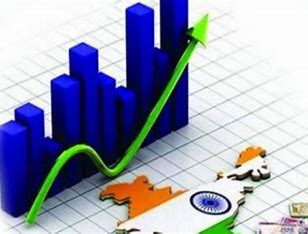Unlike some economies that have embraced extreme de-dollarization policies, often at great cost, India has charted a middle path.
India stands at the cusp of a historic economic transformation. By 2030, it is projected to become the world’s third-largest economy, a monumental shift driven by its burgeoning market, robust growth, and increasing integration into global trade networks. For this growth to sustain, India must secure continued flows of American investment and access to its expansive market. Simultaneously, India’s pragmatic efforts to internationalize the rupee represent a strategic hedging mechanism, which, far from being a radical de-dollarization policy, underscores a careful balancing act.
While such policies might invite scrutiny in a geopolitically polarized world, they are unlikely to provoke alarm from a potential second Trump administration. Trump’s expected “Indophilic” stance could result in an administration historically sympathetic to India, one that may view India as a critical counterweight to China in the Indo-Pacific. This favourable outlook would make sanctions against India highly improbable, even as it advances its economic sovereignty through rupee internationalization.
India’s approach is particularly instructive for other nations in the Global South. Unlike some economies that have embraced extreme de-dollarization policies, often at great cost, India has charted a middle path. Few countries can afford to invite punitive tariffs or sanctions from the US, given their economic vulnerabilities. Moreover, aligning too closely with alternative systems, particularly those centred around China, risks creating a new form of dependence.
China’s expanding economic influence has positioned it as an alternative to the US-dominated dollar system. However, this comes at the expense of sovereignty, as demonstrated by Russia’s overreliance on Chinese financial structures following Western sanctions. India’s strategy, in contrast, emphasizes diversification rather than replacement. By gradually increasing the use of its national currency in bilateral trade deals and engaging with alternative platforms such as BRICS, India avoids the pitfalls of overdependence on any single power.
Despite growing calls for a multipolar financial system, the US dollar is likely to remain the dominant global reserve currency for the foreseeable future. Barring an unexpected “black swan” event, the dollar’s centrality in energy markets and international trade remains intact. A potential Trump administration, with its hawkish stance on China, would take decisive steps to suppress any significant threat posed by the so-called petroyuan.
While the “petroyuan” has been discussed as a challenge to dollar hegemony, it remains limited in scope, primarily functioning in select bilateral energy deals involving China. Should China attempt to institutionalize it on a larger scale, it would face severe backlash, including potential sanctions. Countries using the yuan in defiance of US interests could also become targets, further undermining its adoption. This limits the yuan’s international appeal and maintains the dollar’s dominance in energy trade.
Russia’s pivot to using the ruble in energy deals emerged not as a proactive strategy but as a necessity following US sanctions and its exclusion from SWIFT. While this shift has temporarily reduced the dollar’s influence in certain transactions, lifting or easing sanctions could restore previous norms. Global markets inherently favour convenience and stability, and the dollar remains the most trusted medium for cross-border trade. However, the West’s weaponization of its financial system in 2022 left a lasting impression. This, in turn, has fuelled countries’ desire to hedge against dollar dependency.
India’s approach reflects this reality: a recognition that while reliance on the dollar remains unavoidable, increasing the use of the rupee provides a strategic buffer against future uncertainties. It is a model rooted in pragmatism, not ideology—a stark contrast to the radical de-dollarization rhetoric embraced by some nations.
Despite its rhetoric against Western “hegemony,” China’s financial actions reveal its deep interdependencies with the West. For instance, Chinese financial institutions like the BRICS New Development Bank and the SCO Bank have, in practice, complied with sanctions on Russia, limiting project funding and payment transfers. This demonstrates that China’s economic ties to the West impose constraints on its financial policies, making it an unreliable alternative for nations seeking to escape the dollar system.
Countries aspiring to diversify their financial engagements must therefore proceed with caution. Overdependence on China risks replicating the same vulnerabilities associated with dollar dependency, without the benefits of Western financial stability. India’s model—diversifying its currency usage while maintaining strategic engagement with both the US and emerging platforms—offers a sustainable path forward.
The global financial system is unlikely to experience radical changes in the near term. India’s strategy aligns with this reality. By gradually increasing the use of the rupee, strengthening partnerships through BRICS, and engaging with alternative platforms without abandoning the dollar, India exemplifies a balanced approach.
A second Trump administration is expected to manage these trends pragmatically. Trump’s focus will likely centre on containing China’s ambitions, particularly the expansion of the petroyuan. In this context, India’s policies pose no significant threat to US financial interests, as they remain rooted in economic pragmatism rather than confrontation.
For the Global South, India’s strategy provides a compelling model: diversifying financial tools without alienating major economic partners. It reflects a clear understanding that sovereignty and economic growth are best achieved through balance and gradualism, not ideological rigidity.
In a world marked by geopolitical rivalry and economic uncertainty, India’s path—marked by pragmatism, strategic diversification, and engagement with all major players—represents a roadmap for others to emulate. By striking this delicate balance, India is not only safeguarding its own future but also shaping a more stable and multipolar global financial
* Savio Rodrigues is the founder and editor-in-chief of Goa Chronicle.

